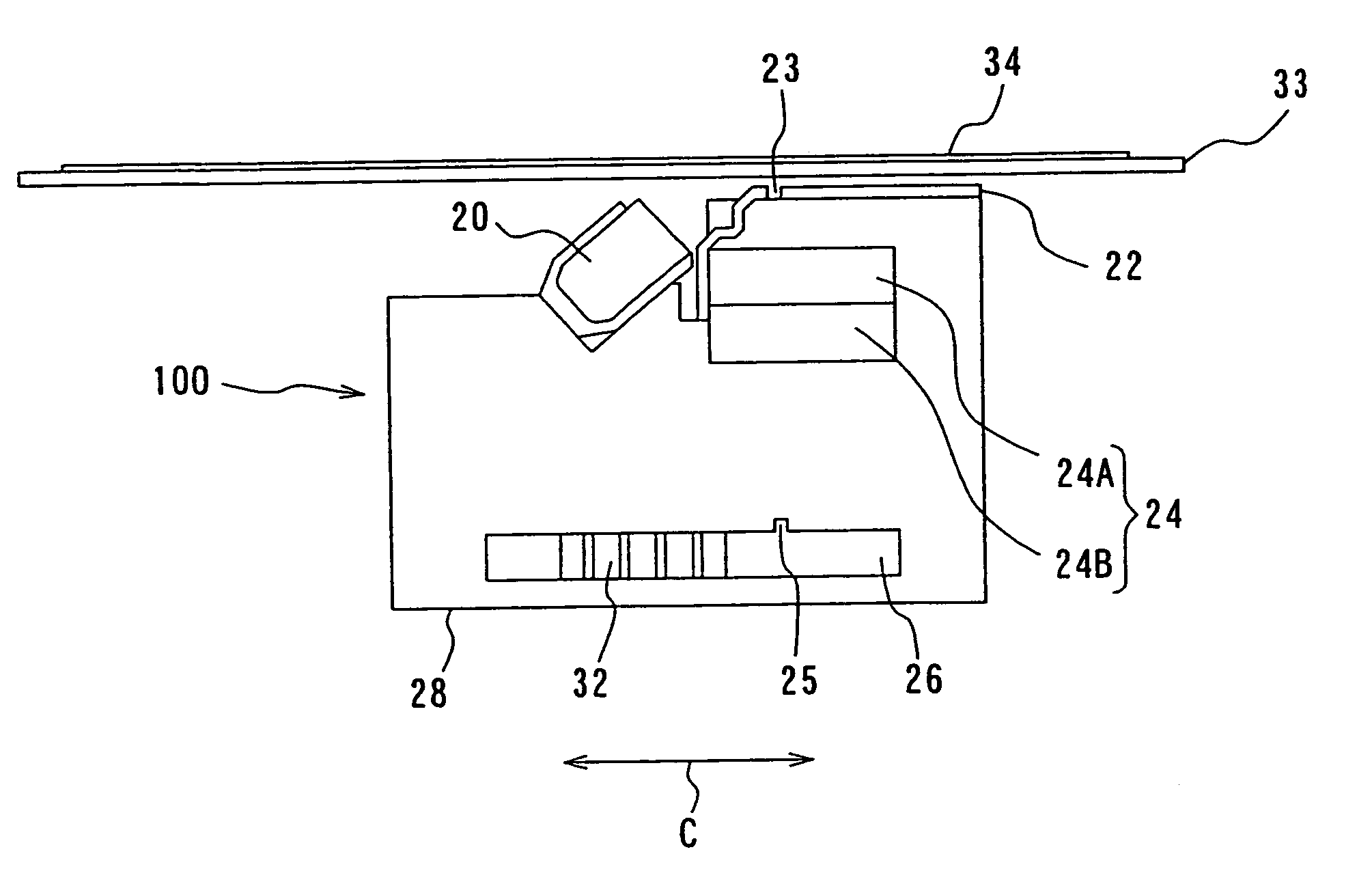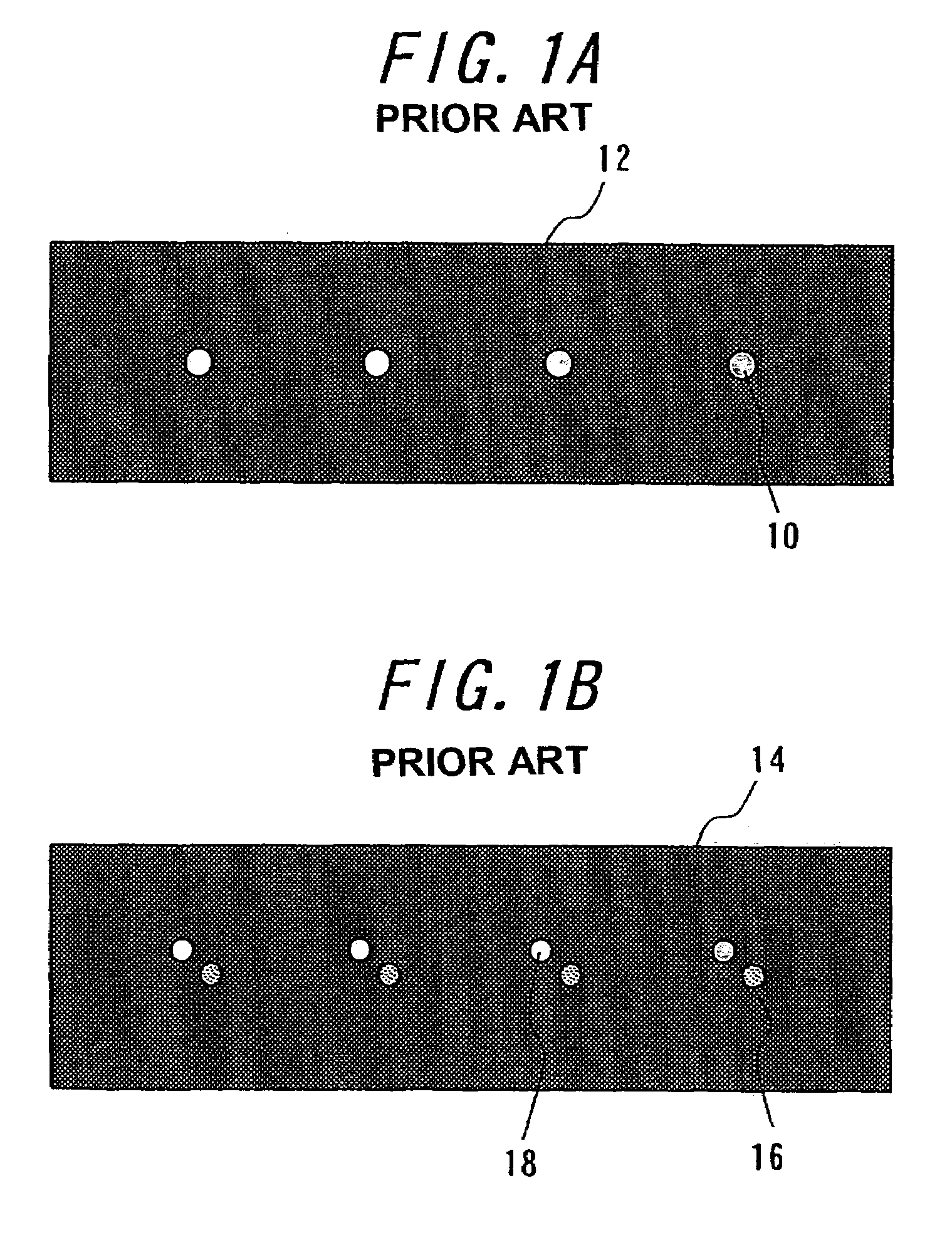Contact image sensor and methods for aligning a light element array substrate thereof
a technology of contact image sensor and array substrate, which is applied in the direction of discharge tube/lamp details, instruments, radiation control devices, etc., can solve the problems of reducing image quality, difficult to integrally form such a light-shielding film, and unnecessary light entering the adjacent area, etc., to achieve convenient power supply to the light source, the effect of easy online alignmen
- Summary
- Abstract
- Description
- Claims
- Application Information
AI Technical Summary
Benefits of technology
Problems solved by technology
Method used
Image
Examples
first embodiment
A First Embodiment
[0045]FIG. 2 is an exploded perspective view of a contact image sensor in accordance with the present invention. This contact image sensor comprises a light source 20, a slit plate 22, an erecting unit magnification lens 24 including stacked two micro-lens array plates 24a and 24b (FIG. 3), a light-receiving element array substrate 26 on which a light-receiving array 25 is mounted and a housing 28 for containing these components.
[0046]The light source 20 is composed of a linear illuminating device, such as one type of device in which the light-emitting element array is linearly located in a main-scanning direction and another type of device in which one or more of the light-emitting elements is located on one or both ends of a linear light-guide in the line illuminating device.
[0047]In this embodiment, an exemplary light source may include one or more of light-emitting elements. In an exemplary embodiment, the light source contains three light-emitting diodes (LEDs...
second embodiment
A Second Embodiment
[0068]A second embodiment, includes a method for aligning a light-receiving element array substrate 26 provided in a contact image sensor. The method may be implemented by the same structure as the contact image sensor shown in the above-described FIG. 7, thus a description of the structure is omitted with regard to similar components or elements. Normally, light irradiated by means of a light source generates an irregular distribution of the amount of light in a main-scanning direction. Therefore, the method includes the step of receiving light reflected from a reference original of uniform lightness distribution (for example, a white color original) by means of the light source to detect sensor-output through a light-receiving element array. The method further includes the step of aligning the light-receiving array substrate 26 in the sub-scanning direction such that an array-line of a light-receiving array 25 mounted on the substrate 26 is inclined with respect...
PUM
 Login to View More
Login to View More Abstract
Description
Claims
Application Information
 Login to View More
Login to View More - R&D
- Intellectual Property
- Life Sciences
- Materials
- Tech Scout
- Unparalleled Data Quality
- Higher Quality Content
- 60% Fewer Hallucinations
Browse by: Latest US Patents, China's latest patents, Technical Efficacy Thesaurus, Application Domain, Technology Topic, Popular Technical Reports.
© 2025 PatSnap. All rights reserved.Legal|Privacy policy|Modern Slavery Act Transparency Statement|Sitemap|About US| Contact US: help@patsnap.com



